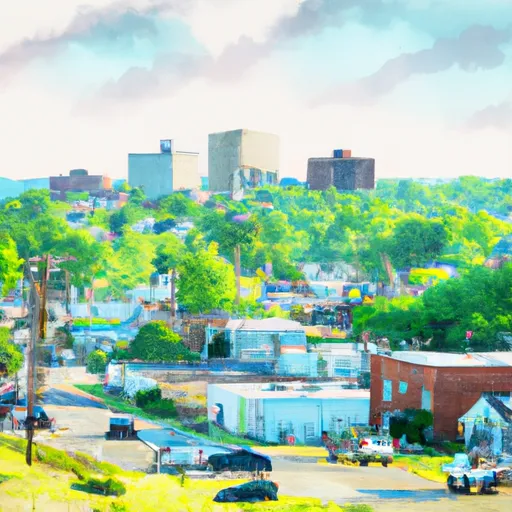-
 Snoflo Premium
Snoflo Premium
Get unlimited access to all our content
With no Ad interruptions! - Start Your Free Trial Login with existing account
Jessieville
Eden Index
Climate
7.6
•
Recreation
5.4
•
Community
2.3
•
Safeguard
5.5/10

Jessieville, a small community located in Garland County, Arkansas, offers a charming rural atmosphere with a range of outdoor recreational opportunities. The region experiences a humid subtropical climate, characterized by hot and humid summers and mild winters. Summers in Jessieville are typically sunny and warm, with temperatures reaching the high 80s to low 90s Fahrenheit, while winters bring cooler temperatures ranging from the 30s to 50s.
Hydrologically, Jessieville is surrounded by several natural attractions. One notable feature is the nearby Ouachita River, which provides opportunities for fishing, boating, and kayaking. The area is also home to several lakes, including Lake Ouachita and Lake Hamilton, offering swimming, water sports, and scenic views.
Outdoor recreation enthusiasts will find a plethora of activities to enjoy in Jessieville. The Ouachita National Forest provides ample opportunities for hiking, camping, and wildlife viewing. Jessieville itself is home to the Ouachita National Recreation Trail, a 192-mile long trail, perfect for hiking and backpacking adventures. Additionally, the area offers opportunities for hunting, mountain biking, and birdwatching, making it an ideal destination for nature lovers.
Overall, Jessieville, Arkansas, offers a favorable climate, beautiful hydrological features, and abundant outdoor recreational opportunities for visitors and residents alike.
What is the Eden Index?
The Snoflo Eden Index serves as a comprehensive rating system for regions, evaluating their desirability through a holistic assessment of climate health, outdoor recreation opportunities, and natural disaster risk, acknowledging the profound impact of these factors on livability and well-being.
Climate Health Indicator (CHI): 7.6
Jessieville receives approximately
1426mm of rain per year,
with humidity levels near 84%
and air temperatures averaging around
17°C.
Jessieville has a plant hardyness factor of
7, meaning
plants and agriculture in this region tend to thrive during the non-winter months.
By considering the ideal temperature range, reliable water supplies, clean air, and stable seasonal rain or snowpacks, the Climate Health Indicator (CHI) underscores the significance of a healthy climate as the foundation for quality living.
A healthy climate is paramount for ensuring a high quality of life and livability in a region, fostering both physical well-being and environmental harmony. This can be characterized by ideal temperatures, reliable access to water supplies, clean air, and consistent seasonal rain or snowpacks.
Weather Forecast
Streamflow Conditions
Lower Ouachita
Area Rivers
Lower Ouachita
Snowpack Depths
Lower Ouachita
Reservoir Storage Capacity
Lower Ouachita
Groundwater Levels
Recreational Opportunity Index (ROI): 5.4
The Recreational Opportunity Index (ROI) recognizes the value of outdoor recreational options, such as parks, hiking trails, camping sites, and fishing spots, while acknowledging that climate plays a pivotal role in ensuring the comfort and consistency of these experiences.
Access to outdoor recreational opportunities, encompassing activities such as parks, hiking, camping, and fishing, is crucial for overall well-being, and the climate plays a pivotal role in enabling and enhancing these experiences, ensuring that individuals can engage in nature-based activities comfortably and consistently.
Camping Areas
| Campground | Campsites | Reservations | Toilets | Showers | Elevation |
|---|---|---|---|---|---|
| Coyote Camp Complex | 13 | 367 ft | |||
| Fullerton Complex | 36 | 307 ft | |||
| Enduro Complex | 35 | 269 ft | |||
| Lotus Camp | 20 | 215 ft | |||
| Red Bluff Camp Complex | 10 | 205 ft | |||
| Dogwood Complex | 12 | 174 ft | |||
| Oak Camp Complex | 23 | 300 ft | |||
| Cloud Crossing Complex | 13 | 130 ft | |||
| Custis Camp Complex | 10 | 302 ft | |||
| Kisatchie Bayou Complex | 30 | 167 ft |
Nearby Ski Areas
Catastrophe Safeguard Index (CSI):
The Catastrophe Safeguard Index (CSI) recognizes that natural disaster risk, encompassing floods, fires, hurricanes, and tornadoes, can drastically affect safety and the overall appeal of an area.
The level of natural disaster risk in a region significantly affects safety and the overall livability, with climate change amplifying these risks by potentially increasing the frequency and intensity of events like floods, fires, hurricanes, and tornadoes, thereby posing substantial challenges to community resilience and well-being.
Community Resilience Indicator (CRI): 2.3
The Community Resilience Indicator (CRI) recognizes that education, healthcare, and socioeconomics are crucial to the well-being of a region. The CRI acknowledges the profound impact of these elements on residents' overall quality of life. By evaluating educational resources, healthcare accessibility, and economic inclusivity, the index captures the essential aspects that contribute to a thriving community, fostering resident satisfaction, equity, and social cohesion.

